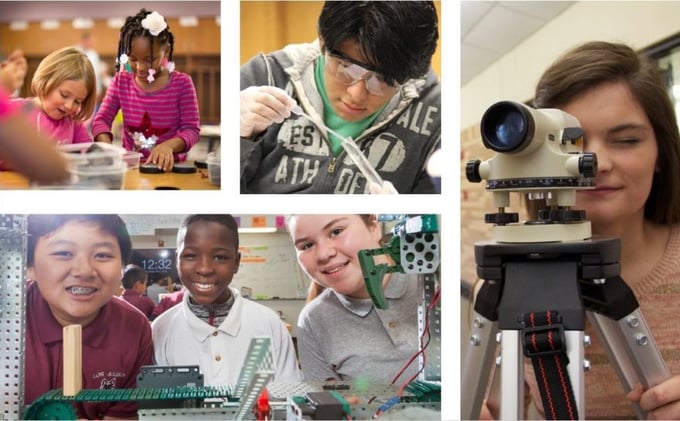This PLTW Blog entry is an excerpt from the PLTW Fundraising Toolkit. You can download the full toolkit here.
Online crowdfunding helps organizations raise funds and gives people the opportunity to donate to individuals, causes, and organizations they care about. There are many platforms you may be familiar with including Kickstarter, Indiegogo, and GoFundMe. Two platforms are focused specifically on education: DonorsChoose.org and AdoptAClassroom.org.
Crowdfunding can be a great tool to further support your PLTW programs. We have gathered some best practices to help you prepare and launch a crowdfunding campaign.
Prep Work
Determine "SMART" goals for the project.
If this is your first time fundraising or crowdfunding, ask yourself “What do we need?” From there, work to determine funding amounts that will help you address that need. Make sure your goal is SMART: Specific, Measurable, Attainable, Relevant, and Timely. Here is an example of a SMART goal: “By Sept. 30, we will raise $1,250 from donors to purchase a 3-D printer for our lab.”
Have some funds committed to your project before you start your crowdfunding campaign.
Potential donors are more likely to support your campaign if there are already some funds raised. If a potential donor sees there is momentum already and the project is likely to be fully funded, they will be more excited and motivated to help you reach your goal.
Note that timing can be key.
This is especially true for sites like DonorsChoose.org and AdoptAClassroom.org. Corporations, foundations, and individuals will offer to match donations or provide “almost-home” grants to schools with active campaigns on the sites. Researching websites’ help and blog sections, especially at the beginning and end of the school year, can help you uncover additional resources to help you meet your goal.
Building and Launching Your Campaign Page
Structure your campaign page as a story about your students.
People don’t donate because you need money. They donate because your story is compelling. What kind of community do your students live in, what kinds of challenges do they face, and how will a donor’s gift help them overcome a challenge?
Briefly explain Project Lead The Way.
Include general information about PLTW and the programs you offer or want to offer at your school, and share a link to our website for donors to learn more.
Include an engaging photo and/or video.
Photos and videos can help potential donors connect with your story. You may even want to challenge your students to tell their own stories to give potential donors an even deeper connection to the classroom.
Assume the person reading about your campaign knows nothing.
As you tell the story of your school or community, do not use acronyms or abbreviations that may not be familiar to someone outside of your school or community. For example, if you use the acronym STEM, be sure to define it for the reader.
Provide examples of how you will use the items requested in the classroom.
Some donors may be unfamiliar with classroom supplies (3-D printers, Anatomy in Clay® Manikens™, or robotics kits), or they may not know how items will be used in the classroom to enhance learning. Explain any equipment and supplies, and provide examples of how students will use them in the classroom and why they are an important element in the learning process.
Promote the page through social media.
It’s not enough just to create a profile and cross your fingers that a month later your campaign has reached its goal. Share your campaign page on Facebook, LinkedIn, Twitter, and any other social media channels that you and your school use. Ask your friends and family to consider sharing, as well.
Don’t expect it to raise money on its own.
Sharing the campaign once with your network may not be enough. It’s important to continue promoting the campaign the entire time it’s running. Share your progress frequently!
Make sure to say thank you.
Social media shout-outs, thank-you emails, or cards made by students will likely be well-received. Donors will also appreciate knowing how the project went, so send them an update once your goal is attained.


